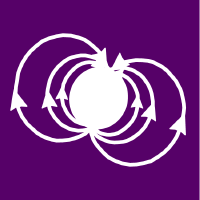Topic Menu
► Topic MenuResearch on Electrostatic Precipitation
Topic Information
Dear Colleagues,
Electrostatic precipitation (ESP) is a widespread technology in the field of filterless particle removal, especially for flue gas cleaning, due to its important ability to collect suspended particles and low pressure loss. As the applications of electrostatic precipitation for coal-fired power plants are facing saturation, the versatility and mechanism of electrostatic precipitation are attracting more interest. Recently, research on electrohydrodynamic flow, nanoparticle collection, indoor air cleaning, etc. has grown rapidly, indicating numerous gaps in knowledge and engineering applications to fully take advantage of electrostatic precipitation. This Special Issue aims to bring together the latest works on mechanisms, numerical models, and applications of electrostatic precipitation, from basic research to applied development, and to contribute to the collection and manipulation of particles, micro–nano materials, biological cells, and flow fields.
Prof. Dr. Keping Yan
Dr. Shuran Li
Topic Editors
Participating Journals
| Journal Name | Impact Factor | CiteScore | Launched Year | First Decision (median) | APC |
|---|---|---|---|---|---|

Energies
|
3.2 | 5.5 | 2008 | 16.1 Days | CHF 2600 |

Magnetochemistry
|
2.7 | 3.5 | 2015 | 15.8 Days | CHF 2700 |

Materials
|
3.4 | 5.2 | 2008 | 13.9 Days | CHF 2600 |

Minerals
|
2.5 | 3.9 | 2011 | 18.7 Days | CHF 2400 |

Separations
|
2.6 | 2.5 | 2014 | 13.6 Days | CHF 2600 |

MDPI Topics is cooperating with Preprints.org and has built a direct connection between MDPI journals and Preprints.org. Authors are encouraged to enjoy the benefits by posting a preprint at Preprints.org prior to publication:
- Immediately share your ideas ahead of publication and establish your research priority;
- Protect your idea from being stolen with this time-stamped preprint article;
- Enhance the exposure and impact of your research;
- Receive feedback from your peers in advance;
- Have it indexed in Web of Science (Preprint Citation Index), Google Scholar, Crossref, SHARE, PrePubMed, Scilit and Europe PMC.



